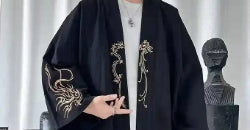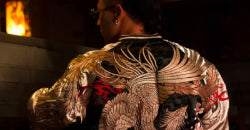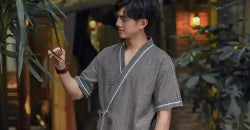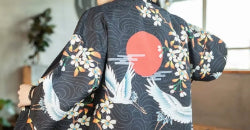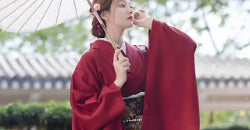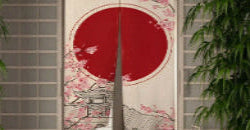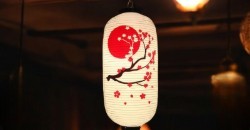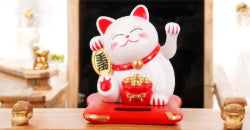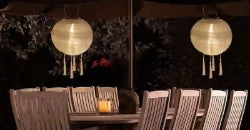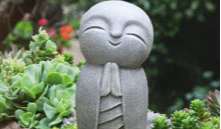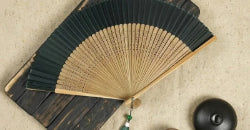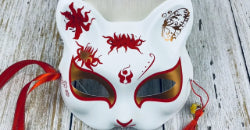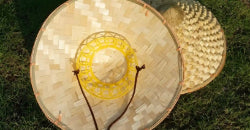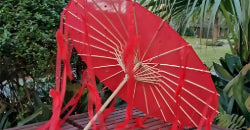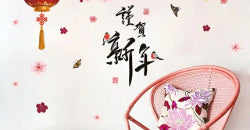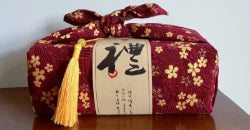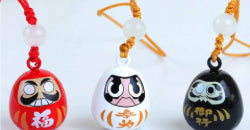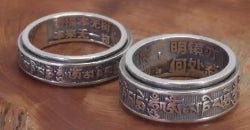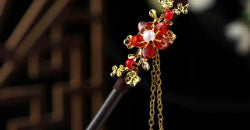Japanese Urban Legends: Scary Stories and Dark Mysteries
Japan, a country rich in tradition and mysticism , is also a land where urban legends take on a particularly frightening dimension. These stories, passed down from generation to generation, blend fact and fiction to create captivating tales that can chill the blood. Whether ancestral myths or modern tales, Japanese urban legends continue to fascinate and terrify those who discover them. Let's explore some of Japan's most famous urban legends , including ghosts, mysterious creatures, and paranormal phenomena.
Japan's Most Famous Urban Legends
Japan is a country rich in tradition and folklore, where urban legends occupy an important place in popular culture. These mysterious and often frightening stories continue to fascinate, whether told quietly among friends or shared on social media.
Hachishakusama: The 8-Foot-Tall Evil Entity

Among the most feared Japanese urban legends, Hachishakusama , also known as Hachishaku-sama, is a mythical creature that haunts children. This Japanese ghost is described as an immense woman, eight feet tall, with long black hair and a pale face. Her approach is signaled by a mysterious sound, an ominous “po po po,” which announces her arrival. True horror stories surrounding Hachishakusama say that anyone who sees her is in great danger. This evil creature particularly targets young children, luring them with its sinister song before taking them to a place from which they never return.
According to legend, once she has chosen her victim, it is almost impossible to escape. Specific rituals, involving amulets and the help of Buddhist monks , are sometimes necessary to ward off this terrifying entity. But even so, Hachishakusama's victims are often haunted for the rest of their lives, constantly watched over by this evil presence. Furthermore, to make your living environment healthier, opt for Japanese decor .
Teke Teke: The Woman Without Legs

Teke Teke is another chilling Japanese urban legend. The story goes that Kashima Reiko, a young woman, was tragically mutilated after being pushed under a train. She is now a vengeful spirit, wandering train stations and tracks, searching for her lost legs. Her name, " Teke Teke ," comes from the ominous noise she makes while dragging her mutilated body. Those who encounter her often face a violent death, as Teke Teke relentlessly pursues them to mutilate them in the same way she was.
Japanese urban legends surrounding Teke Teke vary, but they all share one thing in common: the terror she inspires. Some say she interrogates her victims before attacking them, asking if they know her legs. A wrong answer, or even ignorance, can cause the victim's gender to disappear. This legend highlights how trauma can turn into eternal hatred, driving spirits to seek revenge in terrifying ways .
Rokurokubi: The Woman with the Long Neck

The Rokurokubi is a legendary Japanese creature that disguises its true nature as an ordinary woman by day. However, at nightfall, it reveals a far stranger and more terrifying side. This mythical creature is renowned for its extendable neck, capable of elongating to extraordinary proportions. It uses this power to spy on, frighten, or even attack its victims without being seen. Although often depicted as an attractive woman leading a seemingly ordinary life, its true face is revealed at night, when its neck stretches in a disturbing manner.
According to the versions of the legend, the Rokurokubi can be:
- Benevolent creatures, content to scare humans for their amusement.
- Malevolent demons, feeding on the life energy of their prey.
- Cruel and violent beings, attacking their victims without mercy.
These creatures have become a defining symbol of Japanese folklore, and their story continues to fascinate and intrigue those who explore the myths of Japan.
Myths and Legends of Japan: Between Fiction and Reality
Japan, with its age-old traditions, is full of myths and legends that have survived the ages, blending fact and fiction in a rich array of tales. These fascinating stories, often rooted in Japanese culture and spirituality, continue to captivate the collective imagination and influence contemporary society.
Hanako San: The Toilet Spirit

One of the most popular horror stories in Japan is that of Hanako San, a spirit that haunts school bathrooms. According to this Japanese urban legend, Hanako San is the ghost of a little girl who died tragically and whose spirit remains trapped in the third stall of the girls' bathroom , usually on the third floor. Children who dare to say her name three times risk seeing her appear and being dragged into the afterlife.
Hanako-san is often described as a Japanese girl with a bob, wearing a red skirt and white blouse. Legend has it that she usually appears to children who are alone in the bathroom, creating an atmosphere of silent terror. This story, while widespread in Japanese schools, is also an example of how urban legends can reflect the fears and anxieties of young people.
Tomino's Hell: The Poem That Kills

Tomino's Hell is a Japanese urban legend about a cursed poem. According to legend, this poem, written by Yomota Inuhiko, tells the dark and tragic story of a young boy named Tomino who committed horrible deeds and paid the price in hell. It is said that anyone who reads this poem aloud will suffer terrible things, ranging from bad luck to death.
This Japanese urban legend is a classic example of the influence of words and literature on popular superstitions. The poem itself is written to evoke a sense of unease, and fear of its effects has led many people to avoid reading it aloud. Tomino's Hell is often compared to other cursed literary works, such as "Gloomy Sunday," a Hungarian song that is said to have led to the suicide of several people.
Kuchisake Onna: The Woman with the Slit Mouth

Kuchisake Onna is one of the most frightening and well-known Japanese urban legends. This legend tells the story of a beautiful woman from the Edo period, married to a jealous samurai who, suspecting his wife of infidelity, slits her mouth from ear to ear as punishment. After her death, the mutilated woman returns as a vengeful spirit, hiding her face behind a surgical mask and asking passersby, "Am I beautiful?"
If the person answers "yes," Kuchisake Onna removes her mask to reveal her horribly slitted mouth and asks again, "What now?" If the answer is "yes" again, she disfigures the person in the same way. If the answer is "no," she kills the person on the spot. However, there are ways to escape this terrible situation , such as offering them candy or diverting their attention.
The Cursed Places and Creepy Stories of Japan
Japan is a country where history and mysticism often intertwine, giving rise to places considered cursed and haunted. These places, often steeped in frightening tales, are the scene of unexplained phenomena and disturbing legends.
Hitobashira: The Human Pillars

Hitobashira, or "human pillar," is an ancient and gruesome practice in medieval Japan where human sacrifices were made to strengthen the foundations of large structures such as castles or bridges. One of the most famous legends is that of Maruoka Castle, where a woman named Oshizu was sacrificed to stabilize the castle's foundations. However, when the promise to make her son a samurai was not kept, her spirit began to haunt the grounds, causing annual flooding of the castle moat .
Hitobashira stories exemplify Japan's deep beliefs and the importance of rituals to appease spirits and gods. These tales are often accompanied by stories of curses that befall those who disturb shrines or sacred structures, adding an extra dimension of terror to Japanese urban legends.
The Kiyotaki Tunnel: A Haunted Passage

The Kiyotaki Tunnel, located near Kyoto, is reputed to be one of the most haunted places in Japan. Built in 1927, this tunnel has been the site of numerous tragic accidents, leading to rumors that it is haunted by the spirits of workers who died during its construction. The tunnel is 444 meters long, a number that is associated with death in Japanese culture, further reinforcing the superstitions surrounding this
Tunnel. Drivers traveling through the Kiyotaki Tunnel often report strange phenomena, such as sudden appearances of ghostly figures, unexplained mechanical failures, or feelings of intense unease.
Some legends claim that the tunnel changes length depending on the time of day, and that those who travel through it at night may never leave. The tunnel is also known for its mirror at the entrance, which, according to legend, can reveal the shadow of a ghost behind you. If you see a ghost in the mirror, it is advisable not to look back and to continue driving without stopping.
Aka Manto: The Toilet Ghost

Aka Manto is another Japanese urban legend that takes place in public restrooms, particularly school restrooms. This story tells of a vengeful spirit, dressed in a red cloak, appearing to people using the restroom. Aka Manto asks a simple but deadly question: "Do you want red paper or blue paper?" If you choose the red paper, Aka Manto will violently kill you , covering you in your own blood. If you choose the blue paper, he will strangle you until you turn blue.
There's no right answer to escaping this ghost. However, some tales suggest that politely refusing both options or responding unexpectedly, such as asking for a different type of paper, could trick the spirit and allow you to escape. This legend, like that of Hanako-san, reinforces the idea that even the most ordinary places can become sites of terror in Japanese folklore.
Myths and Legends of Japan: Scary Stories and Cursed Places
The myths and legends of Japan are full of terrifying tales that have survived for centuries, fueling the collective imagination. These mysterious stories are often linked to cursed places where the supernatural seems to come to life, plunging those who dare to venture there into a world of terror.
Gozu: The Cow's Head

Gozu, or "Cow Head," is a Japanese urban legend shrouded in mystery. The story goes that this tale is so terrifying that those who hear or tell it are doomed to die. According to legend, Gozu is a creature with a cow's head that is capable of possessing those who evoke it. The legend of Gozu has been told many times, but never in its entirety, as those who know the details do not live long enough to pass it on.
One of the most famous tales involves a teacher who, during a school trip, decides to tell his students the story of Gozu to scare them. However, as he tells the story, he enters a sort of trance, unable to stop, while his students are plunged into paralyzing terror. The bus they are traveling on crashes, and all the occupants, including the teacher, die in mysterious circumstances. This legend warns against curiosity and morbid fascination, reminding us that some stories should never be told.
The Inunaki Village: A Place Without Faith or Law*

Inunaki is a remote village, reputed to be one of the scariest places in Japan . According to legend, this village is completely cut off from the rest of the world, without any laws or rules. The village's inhabitants are described as violent and depraved, living in a state of total chaos. At the entrance to the village, a sign warns: "The laws of Japan do not apply here." Those who venture into this cursed place often go missing, and it is said that electronic devices stop working as soon as one enters the village.
The legend of the Inunaki village is a mixture of historical fact and folklore. Although a village called Inunaki actually exists , it was abandoned after a series of natural disasters. However, stories of murders, disappearances, and paranormal phenomena have transformed this village into a symbol of terror, where evil reigns supreme. The few survivors of these explorations tell terrifying stories of screams in the night, ghostly figures, and intense feelings of despair.
Aokigahara: The Suicide Forest

Aokigahara, located at the foot of Mount Fuji, is infamously known as the "Suicide Forest." This vast expanse of dense forest is known to be a place where many people come to end their lives. Urban legends surrounding Aokigahara abound, and the forest is considered one of the most haunted places in Japan. Rumors tell of vengeful ghosts called "yūrei" wandering among the trees, seeking to lure new souls into their trap.
The forest is so dense that even in broad daylight, little light penetrates through the thick foliage. Many trails are marked by ribbons left by those who venture into them, hoping to find their way back. However, many get lost and never return. Local authorities conduct regular patrols to try to prevent suicides, but Aokigahara's reputation continues to attract those seeking escape. This dark and eerie forest is a tragic reminder of the internal struggles people can go through and the power of places over the human spirit.
Conclusion: The Fascination with Japanese Urban Legends
Japanese urban legends are more than just stories to scare children or entertain adults. They reveal the deep fears, anxieties, and beliefs of Japanese society , while also offering a fascinating insight into the country's culture and folklore. Whether you're a fan of horror stories or simply curious about unique stories, these legends offer an immersion into a world where the supernatural and the real merge.
These tales, whether inspired by true events or entirely fictional, continue to captivate and terrify those who discover them. They are a reminder that Japan, with its ancient traditions and rich history, remains a country where the mysteries of the past are still very much alive in the collective imagination. So, do you dare to explore Japanese urban legends and delve into the darkness surrounding these fascinating stories?




